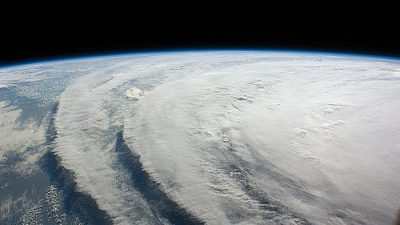The summer’s not yet over and already people are scrambling to mark it down in history: summer 2018 was when climate change arrived in the UK, as the little archipelago gasped in its relentless, stifling heat. Grappling with the weight of climate change is not something that happens easily. The slow mechanics of world destruction aren’t easily captured by the rapid cycles of press runs or popular imagination.
Particularly when many calls to action focus not on challenging the patterns of exploitation which our ruining our daily lives as well as the planet – but rather on ‘saving’ nebulous concepts like a with which we have little contact and a future of which we have little concept. But now it’s unavoidable – climate change is not some distant promised calamity, it’s happening right here and right now.
In response, many balk in dismay at how ‘overpopulation’ lead us here, to the brink of ecological disaster. The problem is supposedly that humans use up our environments, so a critical weight of humanity will has the capacity to destroy the entire planet. Even the term ‘anthropocene’, popular among leftists, and designed to capture the sheer geological scale of the last 200 years of changes, carries traces of this viewpoint – implying that anthropos, mankind itself, is the problem.
This malthusian attitude is a convenient line of thinking if you want to acknowledge the changes in humanity’s environment, but don’t want to challenge the systems of power at the root of the problem. But humanity itself is not doomed to destroy its environment. We toddled along for thousands of years without similar catastrophes. Indeed, we produce a surplus capable of supporting a population far higher than the one currently alive.
That these two facts can coexist on a planet headed for disaster, on which many people die of starvation, gives us a clue that the earth isn’t condemned by the number of hungry people which call it home – but the system which keeps them hungry. Modern climate destruction with this scope and scale can be explained only by the nefarious effects of a certain way of organising and controlling our nature – also known as capitalism.
True, he origins of climate change can be traced back to when life expectancies and populations began to grow in earnest. But we need to take a closer look at why . The exploding birthrate of humanity starts with the colonial age and takes off in earnest around the industrial revolution.
In other words, technological, political and agricultural changes made high birthrates possible – indeed, it depended upon them for a health supply of workers. It also kickstarted a system of short-termist profiteering which has lead to a booming fossil fuel industry, mass deforestation and an ocean choked into barrenness; a planet increasingly hostile to human life. By conflating correlation with causation we end up misdiagnosing the problem.
Scratch the surface and the real targets of the ‘Population Matters’-style critique become obvious. Much political capital is spun from the ‘overly high birthrates’ of countries in the global south. (Once again, the bogeyman figure of the overly fecund woman of colour is drafted in to explain away all of society’s problems).
The solution implied by this approach is profoundly worrying: that in order to save the planet, we need to eliminate or sterilise vast tranches of people. The solution implied is a system of violence against racialised people.
But climate change is already a system of violence against radicalised people. People of colour have been, and will be, impacted sooner and harder by climate chaos than their counterparts in white-majority countries – precisely by dint of colonial patterns of extraction which not only made climate change possible, but stripped many countries of the resources necessary to adequately protect their people from its worst effects.
Though global warming seems a more recent arrival to UK shores, hurricanes in the Philippines and desertification in North Africa are by now reliable features of the political and literal landscape. Indeed, the troubled histories of New Orleans and Puerto Rico tell of the way marginalised working class people and racial minorities in white-majority countries have also bourne the brunt of the disaster.
Countries with higher GDPs and lower birthrates contribute far more to overall carbon emissions than other countries. So if you were going to start curbing birthrates to curb consumption, you should really start in the US and North America. But to mudwrestle over which ordinary citizens are most to blame for climate change is to miss the point.
These discrepancies reveal how its effects are unevenly distributed along lines of class, race and gender. Thus, they give the lie to the idea that humanity overall is at fault rather than the political arrangement in which it finds itself, a system of production and consumption designed to horde wealth in the hands of a few.
The blame really lies with these few. With the people recklessly profiteering from climate chaos, and those unwilling to challenge the system which allows them to wreak havoc. Around 100 companies are responsible for roughly 71 per cent of the world’s greenhouse gas emissions. They know exactly what they’re doing. Exxon and BP and all of them have produced pioneering research into prospective impacts of Climate change. They factor them into their business models. All whilst lobbying governments to continue supporting the fossil fuel industry.
A minuscule minority of people have made themselves incredibly wealthy by committing what amounts to calculated global arson. And some people are still blaming the residents of the burning building. If we’re to avert catastrophe, we need to start calling the real criminals to account.










